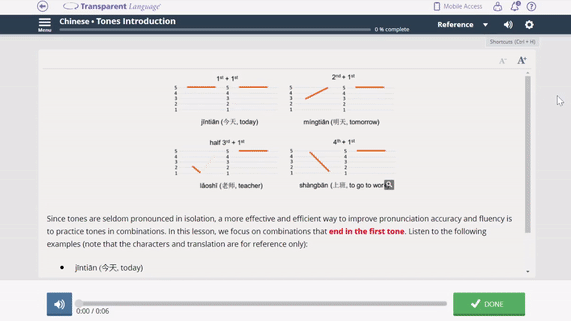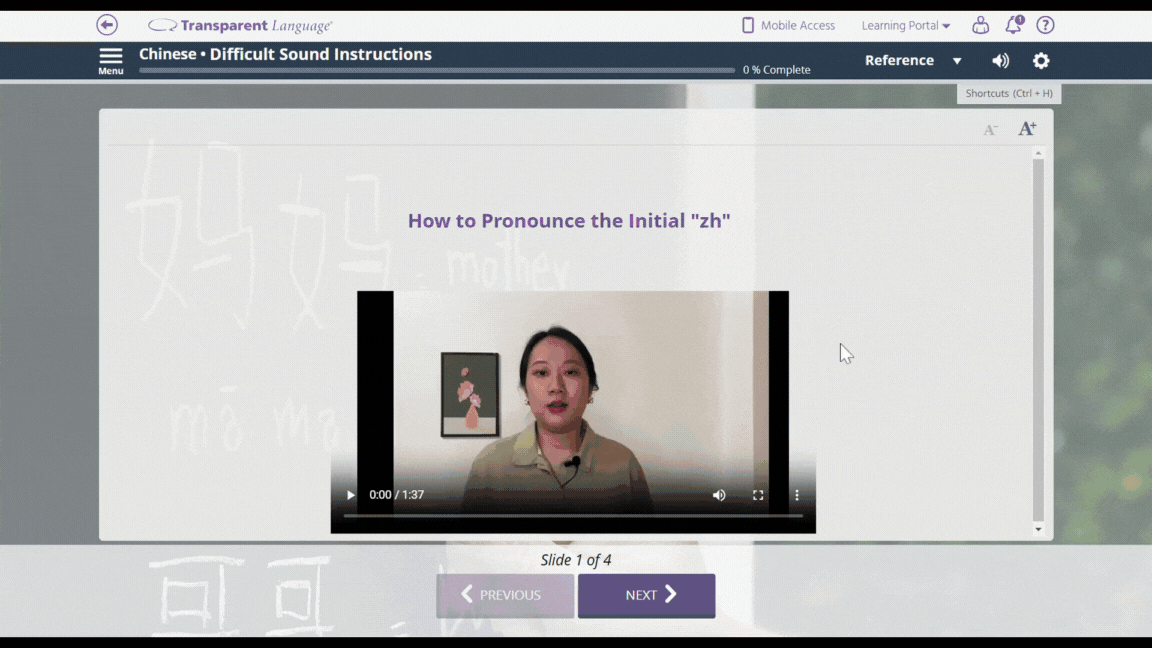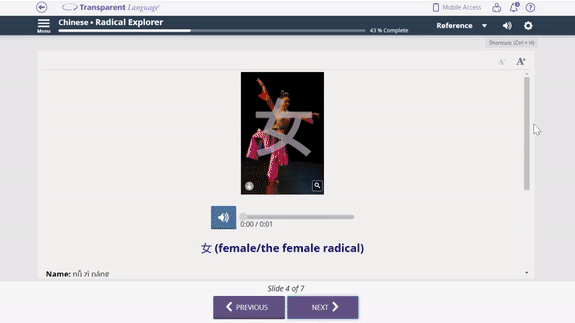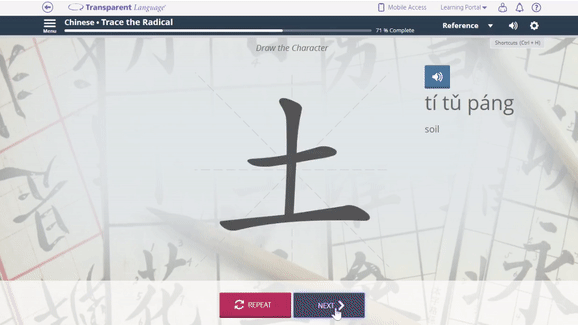The Chinese Beginner Trifecta: Tones, Pinyin, and Radicals Posted by meaghan on Apr 11, 2022 in For Learners, Learning Material Updates
Mandarin Chinese can be an overwhelming language for adults to learn from scratch.
Embrace the beginning of your journey and get started on the right foot with our two new beginner courses: Chinese Tones & Chinese Radicals Familiarization.
Developed by a veteran Chinese teacher, Lei Zeng, these courses apply her lessons learned from more than 10 years of teaching the language to professionals relocating to China:
“Small steps bring big results. Mastering these fundamentals shows learners that Chinese characters are not just a bunch of lines that you draw. There is a logic behind it. The moment students understand the logic and can see why a character means what it does is a beautiful moment as a teacher.”
Chinese Tones Course

Mandarin Chinese is a tonal language—you can’t speak or understand spoken Chinese if you can’t distinguish and pronounce the tones.
In Chinese, the same syllable can be pronounced in different tones to give a word wildly different meanings. For example, if you say the expression for “excuse me” with the wrong tone, you could accidentally say “to kiss”.
These kinds of mistakes are very common among beginners and even among intermediate learners who haven’t quite mastered the way tones behave together. Unfortunately, most textbooks give a quick overview of tones before moving on and they miss an important middle step: practicing tones in combination in multisyllable words.
In ~2.5 hours, our Chinese Tones Course will prepare you to identify and pronounce tones both alone and in multisyllable words.
You’ll work your way up from tones by themselves, to tones in combination, to full words and phrases—all using vocab and language that beginner Chinese learners are likely to come across.
The course also focuses on real world applications. For example, no one in China actually fully pronounces the third tone, so we’ll help you practice it the way you’ll actually hear it in real conversations.
It’s all about helping you learn what you really need to get off to a good start in Chinese.
Chinese Pinyin Course
Another tool to help you refine your Chinese pronunciation is pinyin.
Pinyin is a Romanization system, which essentially spells out Chinese characters using Latin letters (and tone markers, because we know how important those are now!)
It was originally developed in China during the 1950s as a way to improve literacy rates among native Chinese speakers. It’s since become an incredibly helpful pronunciation aid for Chinese learners. It’s also used to type Chinese characters using a Latin keyboard; type in the pinyin syllable and character options appear.
In ~5 hours, the Chinese Pinyin Course will teach you how to pronounce all 400+ pinyin syllables and master challenging sounds you may not be familiar with.
You’ll start by learning the composition of pinyin syllables, focusing on initials (consonants) and finals (vowel sounds). You’ll dive into pronouncing all 57 syllables in the first tone to ease you in. You’ll build up to compound finals (two vowel sounds) and practice all syllables in all tones.

Chinese Radicals Course

You can’t listen or speak without tones—and you can’t read or write Mandarin Chinese without radicals.
There is no Chinese alphabet. There are tens of thousands of characters (!!) that must be memorized. Fortunately, characters are made up of radicals and there’s only about 200 of those (and even native speakers might not know all of them).
When you relate characters to one another using radicals, you can learn more characters in less time.
Unfortunately, in most Chinese textbooks, you’ll get maybe a few pages on radicals. If you’re lucky enough to be working with a teacher, he or she will spend hours and hours expanding on what the textbook teaches so you can make sense of radicals and their implications for stroke order, character meanings, and beyond.
In 6 hours, our Chinese Radicals Course will help you master the 40 most common and essential radicals, both on their own and within characters.
Think of radicals like a key that unlocks the rest of Chinese learning. This course will help you get to the root of Chinese (pun totally intended) through:
- Visual connections: Each radical is presented on top of a related image to help you establish a connection the shape and its meaning through image-based activities.
- Interactive tracing: A finger (or mouse) tracing activities helps you practice stroke order so you can distinguish radicals that look similar.
- Real-world application: At the end of the course, you can prove to yourself that you’ve learned the radicals by applying them to read real-world materials like street signs!

Ready to start your Chinese learning journey on the right foot? Sign up for a free trial of Transparent Language Online or find it free at a library near you.

Build vocabulary, practice pronunciation, and more with Transparent Language Online. Available anytime, anywhere, on any device.




Comments:
Mike Stellar:
Thanks for sharing a detailed guide to Chinese tones and radicals. I really appreciate your research.